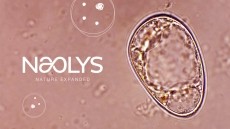Researchers develop stable lightweight foam

Foam formulations are often used in hair mousse, shampoo and shaving foam for differing reasons, and crop up in many other commercial products.
Lightweight foams are normally the most desired but the problem formulators have here is keeping the foam stable.
Capillary foam
With this in mind, the team of researchers developed a new type of foam called capillary foam that solves many of the problems faced by traditional foams.
Their research shows for the first time that the combined presence of particles and a small amount of oil in water-based foams can lead to exceptional foam stability when neither the particles or the oil can stabilize the foams alone.
"It's very difficult to stabilize foams, and we want foams that are stable for months or years," says Sven Behrens, study co-author and professor in the School of Chemical and Biomolecular Engineering at Georgia Tech.
"We've developed a way to make foams that much easier and more broadly applicable that what is traditionally used."
Simple?
The new capillary foams were developed by graduate student Yi Zhang, who is co-advised by Behrens and Carson Meredith, also a professor in the School of Chemical and Biomolecular Engineering.
The main ingredients for foam are air and water. The new study demonstrates how the addition of a tiny amount of oil allows the use of particles with more general properties.
"It sounds like we're making the system more complicated by adding oil to the mix, but it's a small amount of oil that could be something as simple as vegetable oil," Meredith says.
The new capillary foams expand the range of particles useful for stabilizing foams that are made of air and water.
The researchers say that air bubbles are stabilized by the combined action of the particles and the small amount of oil.
This synergy of oil and particulate is counterintuitive because oils usually decrease foam stability and are commonly used as defoaming agents. However, the researchers explain that particles in the capillary foam form a stabilizing network connected by oil bridges.
"This is a novel phenomenon that people haven't discussed before, so we need to know more about why this works," Meredith says.
"We're looking at several different application areas where it could be used as a product," Behrens adds.
The study was sponsored by the National Science Foundation (NSF) and was published online, in the journal Angewandte Chemie.
__________
Yi Zhang, Jie Wu, Hongzhi Wang, J. Carson Meredith, Sven H. Behrens.Stabilization of Liquid Foams through the Synergistic Action of Particles and an Immiscible Liquid. Angewandte Chemie, 2014; DOI: 10.1002/ange.201405816









![Youthtopia is a pre-ageing skin care line powered by upcycled apples. [Origins]](/var/wrbm_gb_food_pharma/storage/images/_aliases/wrbm_tiny/publications/cosmetics/cosmeticsdesign-asia.com/headlines/brand-innovation/origins-s-youthtopia-highlights-powerful-potential-of-upcycled-beauty-ingredients/17746852-1-eng-GB/Origins-s-Youthtopia-highlights-powerful-potential-of-upcycled-beauty-ingredients.jpg)





